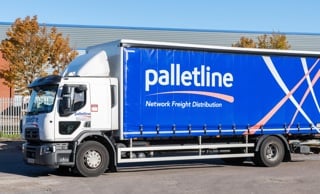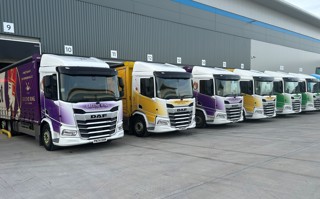Fleet procurement is not the cut and dried process such as that used to purchase paperclips, where a buyer negotiates a price and gets it fixed or a couple of years.
There are many elements, most of them variable, making the task a complex exercise, requiring expertise and insight.
Fleet is also typically a company’s second biggest expense, so it pays to ensure best practice.
For vehicles, because of residual values and the cost of money, there are a lot of moving parts, and often what you get quoted when you do a deal is markedly different when a fleet starts to order.
For example, a buyer gets quotes for a car, but when the driver orders it, he or she may want a roof rack, bigger wheels, a particular colour or some other optional extra.
Other factors that can adversely impact on the final bill are manufacturers’ price rises, reduced residual values and changes in interest rates that affect the cost of funding.
Throw in movement in service, maintenance and repair costs and changes to discount terms offered by manufacturers to leasing companies, and what looked like a fixed price begins to take flight.
Part of financial risk management is ‘rate creep’ in monthly lease rates. These can include end-of-contract charges, early-termination and damage waiver fees.
And the longer the process takes, the more likely it is that quotes will have to be re-written. Set a deadline and make sure all parties stick to it.
The starting point is to know what you want and articulate that. This includes working out whether you need to go to tender at all.
Renegotiating with the incumbent is one option if few changes are required and you are happy with the service, but beware of accepting a lower price only to end up with lower service levels.
Another possibility if you have a small fleet is to go direct to suppliers.
Apparently-free services and other inducements are also dangerous territory; it is easy for the provider to recoup the outlay over the duration of the agreement.
The contract needs to be completely transparent with no hidden costs and no sacrificing long-term value for short-term gain.
Ensure that when benchmarking price, the profile in the tender document is representative of your fleet: this includes checking which marques are being refreshed or replaced, and knowing whether you will want to re-order on that basis.
Factor in current and emerging technology; if you need a supplier to provide continual improvement or contract revision as technology changes, convey that; similarly, if you are intent on reducing carbon emissions and are heading for an all-EV fleet, for which you need support.
Your supplier needs the versatility, flexibility and range to cover all corners.
As part of a procurement process, a fleet decision-maker could score each element according to their priorities, covering risk, service levels, financial stability, corporate social responsibility, value for money and price.
Price should account for 25% to 40% of the scorecard; attributing 50% of the score to it is making price too important. Do not confuse value for money with price.
Do not attempt to procure vehicles without talking to colleagues as directors, procurement and drivers are all key stakeholders and will give valuable input.
This kind of open communication is also important with suppliers. Be honest about complications you are experiencing with your fleet, so they know the level of support and service you will need. They should also be advising on where you can save money without reducing service levels.
And make sure you have access to senior people in your supplier organisations so that you can get things done.
This is particularly necessary if you are leasing because you are subject to your supplier’s suppliers.
The leasing company orders the vehicle but the dealer supplies it, the OEM produces it and uses a transport haulier to deliver it to the driver. This chain needs to be held together centrally.
It is important to manage any fleet/supplier relationship through regular meetings and ongoing email or telephone communication as a collaborative partnership will help both parties plan effectively for future mobility needs.
Moving beyond a transactional relationship to a genuine partnership would appear to be more difficult for public sector fleets that source vehicles and related services through centrally-negotiated Crown Commercial Service (CCS) frameworks.
In addition, the demand for absolute probity when spending taxpayers’ money means there is no scope for prejudice or unconscious bias is selecting or ruling our a supplier from a tender, even if the provider has previously let down the fleet.
There is, however, scope for public sector fleets to get involved in the development of CCS frameworks and abundant opportunity to forge partnerships once contracts are signed.
The frameworks, effectively, save fleets the first two steps of a tender process by pre-qualifying potential suppliers: Are they fit and proper? Are their finances sound? – and by laying basic ground rules.
A leasing framework, for instance, might establish terms for early-termination fees or wear and tear charges.
Single or multiple suppliers?
There is an advantage to getting your entire fleet from one company: everything is in one place, while quotes from two or three leasing companies and choosing the cheapest or the one that best fits your fleet profile and/or requirements introduces a healthy level of competition.
But cheapest is not always best. Value encompasses service levels, innovative ideas and expertise; it takes account of the bigger picture.
Bundling or unbundling services is another option. If your chosen leasing company is handling rental, accident management and other products, they will make a profit on that and you may prefer to go direct for a better deal.
On the other hand, a leasing company will get economies of scale an individual customer cannot negotiate directly.
It is also useful to have a leasing provider handle problems such as a rental vehicle that has not been delivered.
Research the market to see who is offering what and then ask for case studies and customer references; this obviates any nasty surprises in customer service levels.
Visiting potential suppliers and meeting those who will work on your account will also give insight into how they manage contracts day-to-day and give a feel for the culture of the company.
Although it can’t be quantified, “feel” is an important factor in selecting the right supplier, and can often get missed in what can be a sterile procurement process.
While this feature has focused on vehicle procurement, the same basic best practice principles can be applied to other services, such as tyres, accident management or fleet management software.
Eight tips for perfect procurement
The Chartered Institute of Procurement & Supply (CIPS) explains how to build and maintain a successful partnership between fleet and supplier:
- Pre-contract – meet up and visit a supplier’s premises and develop the agreement together, honestly and with transparency in mind, where both sides share their issues and challenges too.
- Establish a clear commitment from both parties on what is expected from each side at the start of the relationship to avoid subsequent misunderstandings. Draw up a clear, concise and realistic contract.
- Organisations seeking differentiation in the market will want to look for true value across the supply chain, not just cost. Beating down suppliers on price is not ethical or responsible procurement and stores up problems further down the line.
- Maintain regular contact: face-to-face communication, regular site visits and frequent performance reviews will keep conversation flowing.
- Keep reviewing service levels on a regular basis.
- Share data; it’s an important aspect of transparency and supporting each other.
- Work collaboratively – have open discussions about where savings could be made without compromising on quality or other important aspects of the partnership.
- Try to understand each other so well that one side can predict how the other will react to a particular challenge, creating a symbiotic relationship.






















Login to comment
Comments
No comments have been made yet.